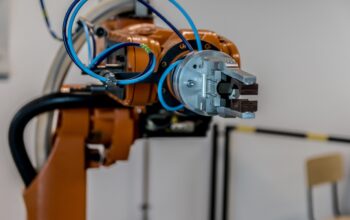Introduction to Supply Chain Shifts in Consumer Electronics
In today’s tech-driven world, consumer electronics supply chains are facing unprecedented challenges and opportunities. From the impact of tariffs to the adoption of cutting-edge technologies like AI and blockchain, companies are rapidly evolving to stay competitive. Let’s delve into some of the top trending consumer electronics regarding supply chain management.
Trending Consumer Electronics in Supply Chain
1. Smartphones and AI Servers
Movements in the smartphone and AI server markets are heavily influenced by tariff policies and geopolitical tensions. For instance, tariffs might lead to a reduction in shipments by up to 6% in extreme cases, affecting both smartphones and AI servers significantly. Businesses are anticipating these changes by advancing shipments and exploring alternative sourcing options.
2. Autonomous Vehicles and AI Integration
Companies like Toyota are leveraging AI to enhance autonomous driving capabilities. For example, Woven, a Toyota investment, is using data and AI to support automated driving systems, achieving substantial cost savings. This integration is transforming the automotive supply chain by enhancing production efficiency and product safety.
3. Data Center Expansion
Data centers are crucial for supporting AI applications, and their expansion is driving semiconductor demand. However, challenges arise from supply chain fragility and geopolitical pressures. Businesses are diversifying their sourcing and production to mitigate these risks.
4. Blockchain for Supply Chain Visibility
Blockchain technology is revolutionizing supply chain management by offering real-time product traceability. Companies can now track products from raw materials to end-users, improving transparency and reducing risks like product recalls.
5. Cloud-Based Supply Chain Solutions
Cloud technology is being adopted to enhance supply chain visibility and efficiency. This includes leveraging cloud services to manage supply chain data, ensure compliance, and meet evolving consumer expectations for sustainability and safety.
Practical Steps for Adapting to These Trends
-
Adopt Diverse Sourcing Strategies: Companies should diversify their supply sources to mitigate risks from tariffs and geopolitical uncertainties.
-
Incorporate AI and Automation: Implement AI-driven tools to enhance supply chain efficiency and predict potential disruptions.
-
Invest in Blockchain for Transparency: Use blockchain to ensure product traceability and improve supply chain visibility.
-
Leverage Cloud Technology: Utilize cloud services to manage supply chain data effectively and meet sustainability goals.
Conclusion on Consumer Electronics Supply Chain Trends
These trends highlight the evolving landscape of consumer electronics supply chains. By embracing technology advancements and strategic diversification, companies can not only survive but thrive in this complex environment. Whether it’s smartphones, autonomous vehicles, or data centers, staying ahead of the curve means being adaptable and innovative in supply chain management strategies.
References:
- https://www.nstechnology.com/insights/electronics-component-shortages-2025/
- https://cloud.google.com/transform/101-real-world-generative-ai-use-cases-from-industry-leaders
- http://electronics360.globalspec.com/article/22178/tariffs-likely-to-curb-consumer-electronics-consumption-in-2025
- https://iea.blob.core.windows.net/assets/86ed1178-4d77-45ac-ab38-28e849f3b93f/EnergyandAI.pdf
- https://www.youtube.com/watch?v=zQES9pq-WdM
- https://developer.mozilla.org/en-US/docs/Learn_web_development/Core/Structuring_content/General_embedding_technologies
- https://www.loftware.com/resources/blog-posts/2025/top-5-trends-for-2025-the-demand-for-supply-chain-visibility
- https://icapcarbonaction.com/system/files/document/250407_icap_sr25_final.pdf



